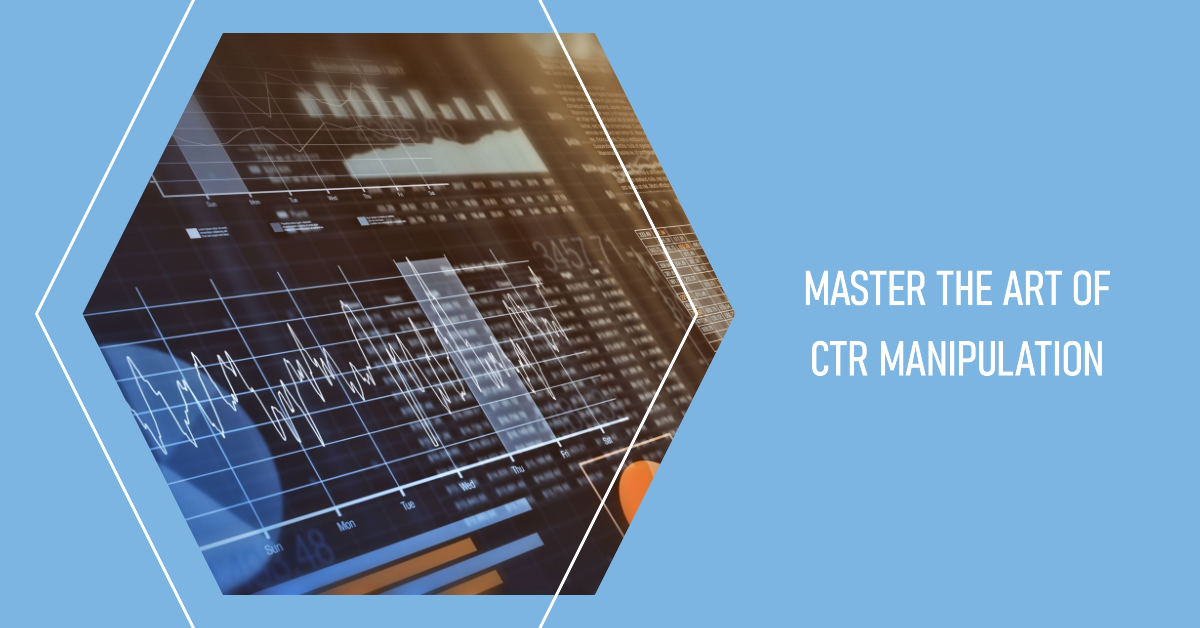Increase Browse Positions Quick With CTR Manipulation
The concept of boosting search positions via click-through price (CTR) control is a critical technique in digital advertising. As we explore the approaches and tools that underpin effective CTR adjustment, it comes to be clear that the trip towards enhanced rankings is much more elaborate than it may initially appear.
Understanding CTR and Its Importance
Recognizing click-through price (CTR) is necessary for enhancing online presence and improving online search engine rankings. CTR gauges the portion of users that click on a specific web link compared to the variety of overall customers that saw a web page or ad. It works as an essential performance metric in electronic advertising, supplying understandings right into the effectiveness of material and its capability to engage the target market.
A high CTR indicates that individuals discover the web content relevant and appealing, which can positively affect online search engine formulas, as they prioritize customer engagement. Conversely, a reduced CTR may signify to internet search engine that the material is not fulfilling individual assumptions, potentially resulting in lessened visibility in search engine result.
Moreover, optimizing for CTR can enhance total campaign performance, as it often correlates with boosted internet site traffic and conversions. Marketing experts can analyze CTR data to fine-tune their approaches, enhance user experience, and eventually drive even more professional leads. In today's competitive digital landscape, understanding and leveraging CTR is not just helpful; it is critical for developing a robust online presence and achieving sustainable growth.
Methods for CTR Control

An additional method includes using rich bits, which enhance search result listings with additional information such as rankings, photos, or prices. This not only makes the listing stand apart but also improves the regarded value of the content.
A/B testing is essential for identifying which elements reverberate ideal with individuals. By try out different headings, pictures, and descriptions, marketers can identify high-performing mixes that cause enhanced CTR.
Additionally, leveraging social media systems to promote material can drive traffic and boost CTR. Sharing appealing snippets or visuals can bring in individuals to click through to the key material.
Last but not least, making certain mobile optimization is vital, as an enhancing variety of individuals accessibility info via mobile phones. A mobile-friendly style enhances individual experience, which can positively affect CTR and, consequently, search positions.
Analyzing Your Present CTR
Evaluating your existing click-through rate (CTR) is crucial for determining locations of improvement in your electronic advertising approach (GMB CTR Manipulation). CTR acts as an essential performance indication, showing the efficiency of your content and its ability to draw in clicks from internet search engine results. A reduced CTR may suggest that your headings are unengaging or that your meta summaries fail to lure customers
To start your analysis, gather data from your analytics platform, concentrating on CTR metrics throughout numerous projects and keyword phrases. Sector this information to understand which pages or content Your Domain Name types are underperforming. Take a look at variables such as the search intent behind key words and the significance of your material to individual questions.
In addition, consider the positioning of your listings on search engine results pages (SERPs) Listings that appear in the top positions typically delight in higher CTRs, so it's vital to analyze your positions. Contrasting your CTR with sector standards can additionally give understanding right into whether your efficiency is affordable. This thorough evaluation will certainly not just highlight locations that require focus yet additionally educate critical choices to boost your overall digital advertising initiatives.
Devices to Improve CTR
Efficient tools can substantially enhance your click-through rate (CTR) by optimizing different aspects of your electronic advertising and marketing method (GMB CTR Manipulation). A/B testing systems, such as Optimizely and VWO, enable marketing professionals to explore different headings, meta descriptions, and call-to-action switches. This iterative procedure assists identify which variants draw in even more clicks, consequently enhancing total CTR
SEO devices like SEMrush and Ahrefs can also play a vital role. They supply understandings into keyword efficiency and competitor methods, enabling you to tailor your material more successfully. By recognizing which keyword phrases create higher interaction, you can enhance your titles and summaries to align with individual intent, optimizing your presence.
Additionally, tools for producing distinctive visuals, such as Canva or Adobe Spark, can improve your web content's appeal. Engaging video clips and photos can compel users to click on your web links over others.
Gauging the Effect On Positions
Gauging the influence of click-through rate (CTR) manipulation on search rankings is necessary for understanding the effectiveness of your optimization techniques. By thoroughly assessing the relationship in between CTR changes and ranking fluctuations, businesses can gain insights right into just how their efforts influence presence on online search engine.

Furthermore, segmenting data by device kind, geographical place, and time of day can uncover nuanced patterns and trends. A/B screening different titles and meta descriptions can provide more clearness on which adjustments yield one of the most considerable ranking enhancements.
It is important to recognize that while CTR manipulation can bring about temporary gains, sustained success relies on supplying high quality content and a favorable individual experience. Consistent surveillance and adjusting methods based on measurable results will make sure long-term effectiveness in enhancing search rankings via CTR optimization.
Conclusion
In verdict, the manipulation of click-through prices (CTR) acts as a strategic method to boost search rankings successfully. By executing various techniques such as enhancing headings, making use of rich bits, and advertising content on social networks, substantial improvements in individual involvement can be achieved. Continuous analysis and adjustment based upon CTR information are vital for straightening with user intent. Ultimately, these methods add to raised visibility in online search engine results, driving website traffic and boosting overall site performance.
CTR gauges the percent of customers that click on a details web link contrasted to the number of complete customers that checked out a web page or ad. Marketing experts can assess CTR information to improve their approaches, improve individual experience, and eventually drive more competent leads.To efficiently manipulate click-through rates (CTR), marketers can employ a selection of strategies created to improve individual interaction and drive web traffic. A low CTR may indicate that anchor your headings are unengaging or that your meta summaries stop working to entice users.
